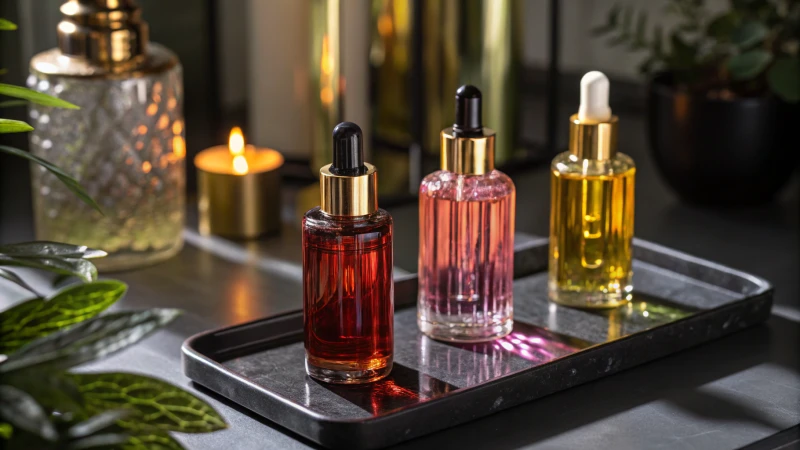
Imagine investing in a luxurious skincare product, only to find it loses its potency before you even finish it.
UV-resistant cosmetic glass protects light-sensitive ingredients by blocking harmful ultraviolet rays, preserving the efficacy and stability of products. It’s perfect for ingredients like essential oils and vitamin C, which can degrade when exposed to light.
I remember the first time I learned about UV-resistant glass. It was during a visit to a cosmetic packaging factory. Standing there, surrounded by rows of beautifully crafted bottles, it struck me just how crucial packaging is to keeping our favorite products effective and safe.
Choosing the right type of UV-resistant glass for your products is like finding that perfect balance in a recipe; it requires attention to detail and a clear understanding of what your ingredients need. Whether it’s amber, cobalt blue, or another type, the right glass can be a game-changer for maintaining the quality of your cosmetics. Dive deeper into this topic to discover the full range of benefits and considerations involved in selecting UV-resistant packaging for your cosmetic line.
UV-resistant glass blocks harmful ultraviolet rays.True
UV-resistant glass is designed to block UV rays, protecting contents.
All cosmetic ingredients are light-sensitive.False
Not all ingredients are sensitive; some remain stable when exposed.
What Types of UV-Resistant Glass Are Available for Cosmetics?
Choosing the right UV-resistant glass for cosmetics is like picking the perfect outfit for your products. It’s all about protection and style!
UV-resistant glass options for cosmetics include amber, cobalt blue, and frosted glass. These materials effectively block harmful UV rays, preserving product quality and extending shelf life.
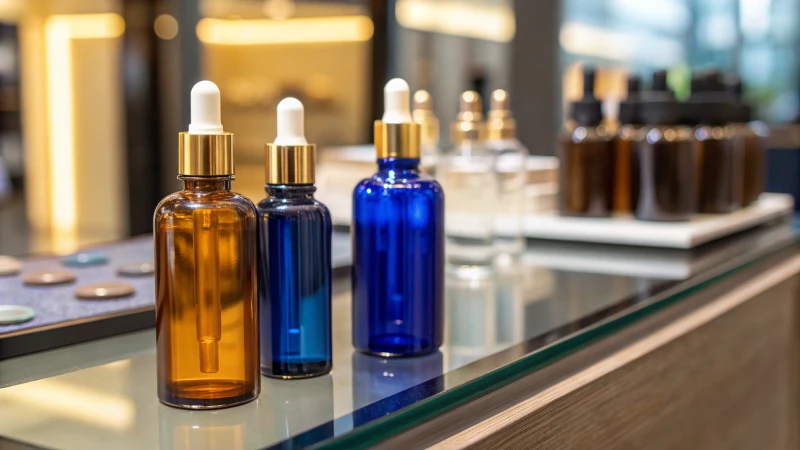
Types of UV-Resistant Glass for Cosmetics
1. Amber Glass
When I first started in the cosmetics industry, I quickly learned that amber glass was a staple. It’s not just its classic, earthy look that appeals; this glass offers top-notch UV protection, perfect for those sensitive serums and essential oils I adore. Every time I see a bottle of amber glass, it takes me back to my early days, experimenting with blends in my tiny kitchen lab.
2. Cobalt Blue Glass
Then there’s cobalt blue glass—my personal favorite when I want my products to scream luxury and sophistication. It doesn’t just look good on the shelf; it also offers decent UV protection. I remember the first time I used cobalt blue packaging; I felt like I was stepping into the big leagues, ready to compete with high-end brands.
| Glass Type | UV Protection Level | Best For |
|---|---|---|
| Amber | High | Serums, essential oils |
| Cobalt Blue | Moderate | Luxury cosmetics |
| Frosted | Variable | Aesthetic and versatile use |
3. Frosted Glass
Frosted glass brings a touch of elegance and mystery to any product line. With its soft, matte finish, it was love at first sight for me. It’s like adding a veil of sophistication over my creations. Whether it’s a delicate perfume or a rich night cream, frosted glass always elevates the presentation. Plus, the added UV protection is a bonus!
Explore more on how frosted glass can elevate packaging design1 and its compatibility with various formulations.
Choosing the Right UV-Resistant Glass
Picking the right glass for your cosmetics isn’t just about protection; it’s also about capturing the essence of your brand. Amber glass is indispensable if you’re working with ultra-sensitive ingredients—think of it as your little black dress of packaging. Meanwhile, cobalt blue and frosted glass offer that perfect blend of form and function for products that need to stand out in style.
Sustainability is another factor I cherish deeply, and luckily, all these glass types are recyclable, aligning beautifully with eco-friendly packaging trends2. Whether you’re just starting out or rebranding, choosing the right packaging can make all the difference.
Amber glass offers the highest UV protection for cosmetics.True
Amber glass blocks harmful UV rays effectively, ideal for sensitive products.
Frosted glass provides the least UV protection among the options.False
Frosted glass has variable UV protection, not necessarily the least.
How Does UV Light Affect Cosmetic Ingredients?
Ever wondered how the sun affects the cosmetics you swear by? Turns out, UV light can really stir things up with your skincare products.
UV light can compromise cosmetic ingredients by breaking down their active compounds, leading to decreased effectiveness and possible skin irritation. To protect these sensitive components, use proper packaging and UV filters.
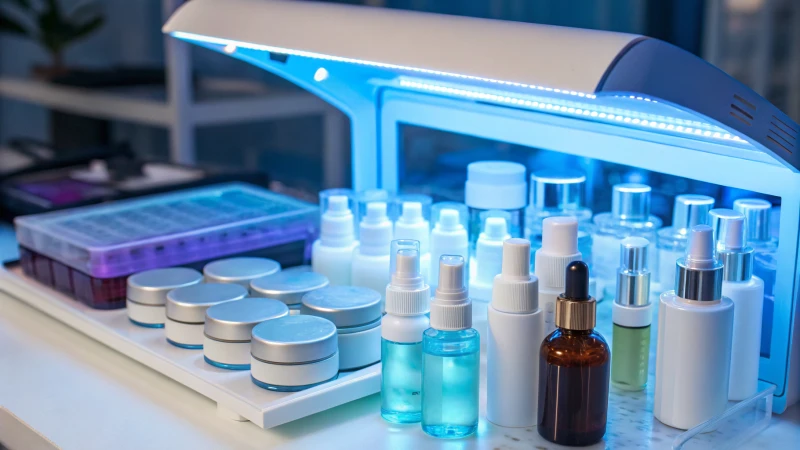
Understanding the Basics of UV Light and Cosmetics
Let’s dive into the world of UV light, shall we? I remember being curious about this when I noticed some of my favorite serums losing their magic. It turns out that UVA and UVB rays can sneak into product containers, messing with cosmetic formulations3. This exposure often spells trouble for active ingredients like antioxidants, vitamins, and those lovely natural extracts we all adore.
The Impact on Different Ingredients
- Antioxidants: Take vitamin C, for instance. It’s like a superhero ingredient but has a kryptonite—UV light. It oxidizes upon exposure, which means it’s less effective at fighting off those pesky free radicals.
- Botanical Extracts: I once had a cream infused with chamomile extracts that seemed to lose its soothing touch over time, likely due to UV exposure.
- Retinoids: Ah, retinoids! Fantastic for skin renewal but sensitive to sunlight. They can degrade quickly, sometimes leading to irritation if they aren’t stored properly.
| Ingredient | Effect of UV Exposure |
|---|---|
| Vitamin C | Oxidation, reduced efficacy |
| Retinoids | Degradation, irritation |
| Botanical | Potency loss |
Packaging Solutions for Protection
I’ve learned that frosted glass or opaque packaging is like a shield for your skincare treasures. These options can block or reduce UV penetration, ensuring those active ingredients4 stay potent and effective. More brands are hopping onto this trend, focusing on maintaining product stability and prolonging shelf life.
The Role of UV Filters
Then there are UV filters—kind of like sunscreen for your products. Ingredients such as zinc oxide or titanium dioxide create a protective barrier, reflecting harmful rays away from your goodies.
Evaluating Product Labels for UV Protection
Whenever I’m picking out new cosmetics, I always scan for terms like "UV-stabilized" or "light-resistant." These labels hint that the product has been designed to brave UV exposure. Sometimes, diving into scientific studies5 offers even more peace of mind and guides me toward smarter skincare choices.
UV light causes oxidation in vitamin C.True
Vitamin C oxidizes under UV exposure, reducing its efficacy.
Opaque packaging increases UV exposure to cosmetics.False
Opaque packaging reduces UV exposure, protecting product stability.
Can Packaging Be Both Eco-Friendly and UV-Resistant?
Ever wonder if you can find packaging that’s both eco-friendly and UV-resistant? You’re not alone! Dive into this journey with me as we uncover innovative materials that promise to protect our planet and your products.
Yes, you can choose eco-friendly UV-resistant packaging using materials like frosted glass, bioplastics, and coated papers. These options not only offer sustainable UV protection but also help reduce environmental impact.
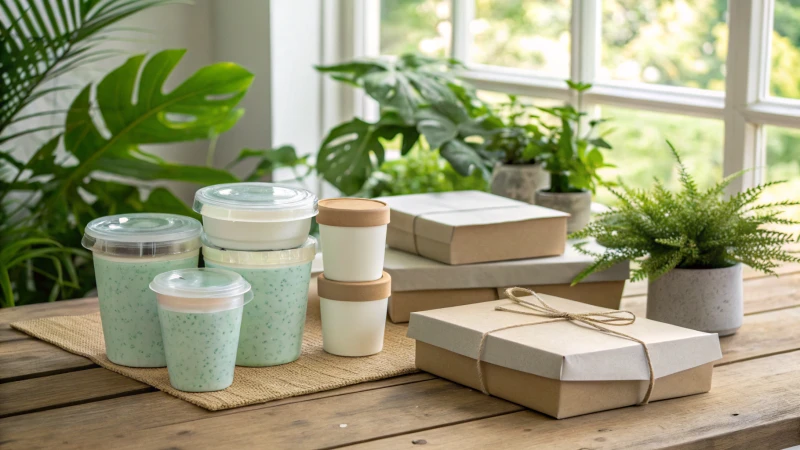
Frosted Glass: A Premium Eco Choice
When I first stumbled upon frosted glass, I was struck by its luxurious appeal. It’s not just beautiful—it’s practical. Fully recyclable, it offers fantastic UV protection. I remember seeing how brands like Aurapak6 are leading the charge in sustainable manufacturing, making this a go-to choice for luxury items.
Biodegradable Plastics
Bioplastics remind me of those times I tried switching to a greener lifestyle—challenging but rewarding. Made from renewable resources like corn starch or sugarcane, these plastics provide UV protection similar to traditional plastics but with a lighter carbon footprint. The industry is still working on making them degrade faster, which I find fascinating.
| Material | UV Protection | Eco-Friendliness |
|---|---|---|
| Frosted Glass | High | Fully Recyclable |
| Bioplastics | Moderate | Biodegradable |
| Coated Paper | Variable | Recyclable/Compostable |
Coated Papers
The first time I learned about UV-resistant coatings on paper, it felt like discovering a hidden gem. These coatings, often water-based, provide UV protection and are gentle on the environment. Perfect for lightweight packaging! They offer protection7 against UV light while minimizing environmental impact.
Innovations in Coating Technology
Speaking of hidden gems, have you heard about nano-coatings? They’re revolutionizing how we enhance UV resistance in eco-friendly materials. This technology boosts durability without sacrificing our planet’s wellbeing.
Challenges and Considerations
As exciting as these options are, balancing cost, performance, and eco-friendliness is no small feat. Brands need to carefully evaluate8 their needs, considering both environmental impact and consumer demand. It’s a delicate dance between sustainability and functionality, but it’s one worth mastering.
Exploring these choices shows that sustainable and functional UV-resistant packaging is more than a dream—it’s our reality. Whether through innovative uses of glass, bioplastics, or advanced coatings, we’re witnessing the packaging industry’s evolution to meet these dual demands. It’s a journey I’ve been passionate about and am thrilled to share with you.
Frosted glass is fully recyclable and UV-resistant.True
Frosted glass offers excellent UV protection and is fully recyclable.
Biodegradable plastics have high UV protection.False
Biodegradable plastics offer moderate UV protection compared to traditional plastics.
Why is Frosted Glass the Best Choice for Skincare Packaging?
Have you ever wondered why some skincare products just feel more luxurious?
Frosted glass is the go-to for skincare packaging because it combines elegance with functionality. It offers UV protection, maintains product integrity, and appeals to eco-conscious consumers, enhancing both brand value and product quality.
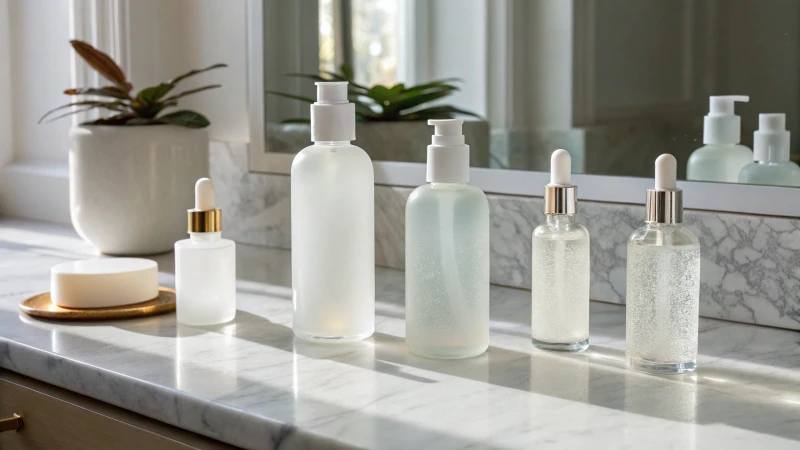
The Aesthetic Advantage
There’s something about frosted glass that just screams sophistication. Imagine walking into a store and seeing a skincare line displayed in those misty, elegant bottles. You’d probably think, "This must be high-end stuff!" That’s exactly what frosted glass does for a product—it elevates its appeal and justifies a premium price tag. I remember the first time I switched my brand’s packaging to frosted glass. Customers started perceiving the products as more luxurious, and sales went up.
Protection and Durability
We all know the frustration of buying a product only to find out its key ingredients have lost their potency. Frosted glass offers that peace of mind with its UV protection. Ingredients like vitamin C stay effective longer, making your skincare routine more reliable. Plus, it’s durable and resistant to chemical interactions.
Here’s a comparison table:
| Feature | Frosted Glass | Clear Glass |
|---|---|---|
| UV Protection | Yes | No |
| Durability | High | Moderate |
| Aesthetic Appeal | Premium | Standard |
Eco-Friendly Credentials
Choosing frosted glass is like choosing a better future for our planet. It’s fully recyclable, which always gives me a sense of doing my bit for sustainability. Many manufacturers are moving towards green production practices9, making it easier for brands like mine to align with eco-friendly goals.
Design Versatility
If you’re anything like me, you love a cohesive look across all your products. Frosted glass offers the versatility needed to achieve this—whether it’s jars or pumps, the possibilities are endless. I’ve experimented with different designs, and it’s amazing how easily frosted glass can adapt to various branding needs.
Consumer Appeal
When your packaging feels premium, it resonates with discerning consumers who appreciate quality and aesthetics. This has been my secret weapon in standing out in a crowded market. By using frosted glass, I’ve been able to boost consumer trust and influence purchasing decisions positively.
Finding Reliable Suppliers
Finding the right supplier can feel like finding a needle in a haystack. Trust me, I’ve been there. Look for suppliers with ISO certifications10 and reasonable MOQs (Minimum Order Quantities). Customization options have also allowed me to tailor my packaging without compromising on quality, making all the difference in setting my brand apart.
Frosted glass offers UV protection for skincare products.True
Frosted glass provides inherent UV protection, preserving product efficacy.
Clear glass is more durable than frosted glass.False
Frosted glass has higher durability compared to clear glass.
Conclusion
UV-resistant cosmetic glass protects light-sensitive ingredients by blocking harmful rays, preserving product efficacy and stability, making it essential for high-quality skincare packaging.
-
Frosted glass enhances aesthetic appeal and offers some UV protection, appealing to luxury brands. ↩
-
Discover how recyclable materials like glass are shaping eco-friendly packaging solutions. ↩
-
This link provides scientific insights into how UV exposure alters cosmetic ingredient properties. ↩
-
Learn how frosted glass packaging protects cosmetic ingredients from UV damage while enhancing brand image. ↩
-
Explore detailed research on the stability of cosmetic ingredients under different conditions. ↩
-
Discover how Aurapak implements sustainable practices in manufacturing frosted glass packaging. ↩
-
Explore how UV-resistant coatings enhance the durability and functionality of paper packaging. ↩
-
Learn how to assess different eco-friendly packaging technologies for better decision-making. ↩
-
Learn how sustainable practices benefit both the environment and brand image. ↩
-
Understand how certifications ensure supplier reliability and product quality. ↩



